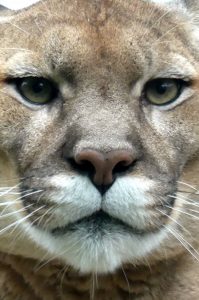
Part one of my talk (and last week’s post) focused on a few of the beautiful animals I’ve photographed and the connections that might make that possible. Butterflies, deer, beaver, mink, loons, egrets – all have evolved to read other animals, including us, and respond appropriately. Part two will focus on animals we are not always happy to see, but who are just as much a part of Mother Nature’s family. And while we’re at it, let’s give a bit of thought to our fellow humans. Do we still read and react to them as Nature intended? Or do we form opinions – and fears – based on hearsay and stereotypes?
I took this picture of a mountain lion at the zoo, but I’m pretty sure I heard one snarling outside my window once, along with a baby raccoon’s desperate cry. What do you feel when you look into this face? It’s beautiful, yet brings fear to many. The chances of ever seeing one as it moves through Minnesota, much less being attacked, are next to zero. So why are we afraid? Is it all the stories of big bad wolves? “Lions and tigers and bears. Oh my!”
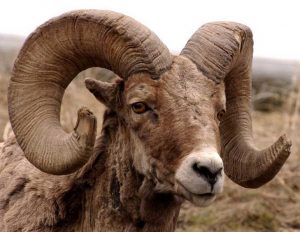
True, I was once charged by a bighorn ram. Was I afraid? YES! He was enormous, only ten or so feet from me, with those massive curled horns lowered and coming at me. Was I hurt? No. I had accidentally wandered into his territory, and when he was sure I was leaving (as in running down the mountain!) he stopped.
Then there was the young bull moose I ran into – almost literally – on another day in the Rockies. Hurrying and sweating and watching the trail beneath my feet, I didn’t see him until he was right in front of me, blocking the narrow trail. I froze, wondering what to do, when he politely stepped off the trail and let me pass.
It seems these animals knew I was not a threat, and therefore were not a threat to me. I was thankful for that, and for the big lesson: keep my eyes open, stay mindful of my surroundings and of what I’ve learned of animals and the world we share.
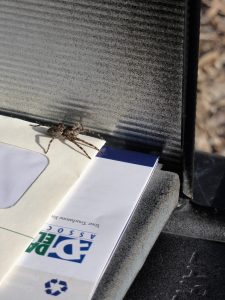
But most often, when I hear people expressing fear, it’s of more common critters, like spiders, bats, and snakes. I have always been thankful for the day my father called us kids to come and look at a beautiful spider. I was young, but old enough to know that most of my friends were afraid of spiders. In that moment, I not only got close enough to see the lovely yellow and black pattern, but realized there was nothing to be afraid of as long as we didn’t disturb it. Now I see stories of people reacting with such panic that it makes them roll their cars or even burn their houses in attempts to escape or kill these little critters! I wonder, was it their parents or some horror movie that instilled that fear? Sure, there are spiders that carry venom. But they are rare, seldom aggressive, and almost non-existent here in Minnesota. And spiders are great hunters of other insects, making them much more beneficial than dangerous. I once had a problem with pantry moths, until a daddy-long-legs took up residence in the corner. I told my mother, “Don’t bother this guy. He’s working for me!” Later I had a nest of big black ants in my mailbox. Did you ever have an ant farm? They are fascinating! But I doubted my mail carrier would appreciate their growing presence. I don’t like to use poisons, and was sure a smelly dryer sheet would repel them. But no, they continued to care for their hundreds of white pupae – until a wolf spider showed up. After a day or two, everyone was gone and my mailbox was clean. Thank you, spider.
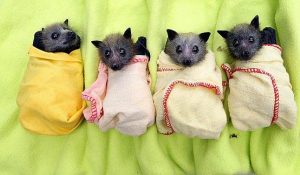
The same irrational fear seems to dominate our image of bats. Sure, they can contract rabies, but only one-half of one percent do, and that causes only one or two human deaths per year in the United States. And getting tangled in people’s hair? More myth than fact. A bat’s echolocation skills make it the most skillful flyer on earth, even in the dark. Any contact is more likely caused by human panic than bats “attacking.” When I swim across the lake at dusk, I turn onto my back to see any bats who might join me. They swoop close to my head, hunting the mosquitoes that are after me, and give me a little thrill with their amazing aerial dances in the sunset. No wonder the mouse looked up at a bat and said “Look! An angel!” True, we don’t need them or their guano in our houses. But turn on the lights, open a window, and close the door to the room, and they will almost always leave.
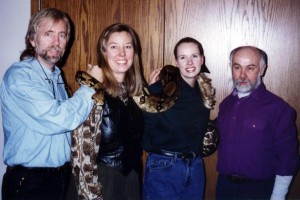
Snakes get a bad rap, from the Bible to Shakespeare to “Snakes on a Plane.” I have to admit that I have been startled by their quick slithers through long grasses. And I wonder if they are harder to relate to because they are so different from us. I often dream of flying like a bird, and feel like a fish when I swim. But I can never quite understand how snakes can move – and even climb trees – without arms or legs! I am grateful for the reptile expert who came to my elementary school espousing the talents of snakes. He even let us touch his pets, pointing out that they are beautiful, and not at all slimy. Now I enjoy picking up the occasional visitor to see if it has a pretty red belly.
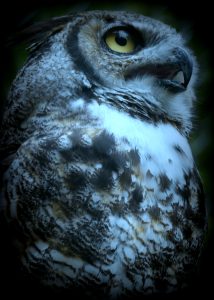
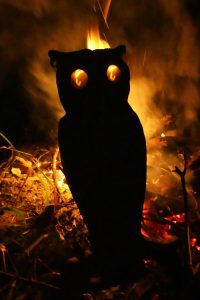
Since it’s just a few days after Halloween, I have to acknowledge that many people love being scared. I remember being a young child and screaming and laughing at the same time at some monster game we were playing. But I am saddened when I see irrational fears passed on to children. Fears that do more to traumatize than to protect. Especially when they stop people, young or old, from going out on a moonlit night, looking up at the stars, and hearing the sound of an owl or coyote adding magic to the beauty.
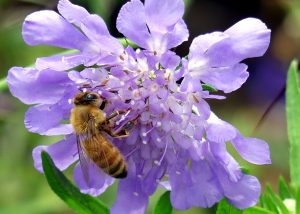
When we see wolves only as competitors for food, or judge them all on the actions of a few, we demonize them unnecessarily. We miss their gentle spirits, intelligence, strong family ties, and important contributions to the health of the ecology. For fear of getting stung or losing profits, we over-use poisons and are in danger of losing our pollinators, which means our food. Some people even deliberately run over turtles. I’ve been swimming with big snapping turtles for twenty years, and have never seen one snap. The worst traits of animals, like the spray of a skunk, come out when they feel threatened or are hungry. The same is true of us.
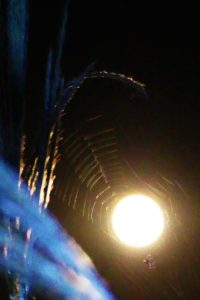
There are many who profit from providing us with scary stories – books, television, movies – that we seem to love. There’s hardly a show on TV that doesn’t have villains, violence, and suspenseful music in the background. Yes, there are real dangers in the world, but our media greatly exaggerates and dramatizes them to keep our attention and our money.
Just as we’ve been fed over-blown stories of animals and people attacking, we are being encouraged by some to fear and hate people who look, speak, or worship differently than we do. We are told they will take away our jobs, housing, food, and safety. Yes, there are threats in our human societies as well as in nature. But seeing others only as competitors or dangerous is never the whole story. Caution is good. But it is understanding, community, and compassion – not anger, fear, and aggression – that will protect us.

While it’s natural to be motivated by hunger and fear, some humans are also driven by greed and a quest for power. That is what scares me – the thought that we could actually elect a bully, thinking that he will protect us. A man who plays into our fears instead of believing in our strengths. A man with little knowledge or understanding of our world, natural or otherwise. He believes he can get attention and control by poking everyone and everything with a sharp stick. Well, he is getting attention, but he’s making us less safe and less civilized. Please stop him before it’s too late.
…Oh, but I suppose if you are reading my blog you probably care about nature and the earth. So perhaps you have already committed to voting for the woman who knows – and isn’t afraid to say – that climate change is a much bigger threat than terrorism. She has plans for green energy and technology that will create jobs, stimulate the economy, and protect our precious Mother Earth. Please vote for Hillary.
© 2016 Holly Jorgensen — but feel free to share!
Beautiful pictures Holly, I love the bats!
Thanks, Susan!